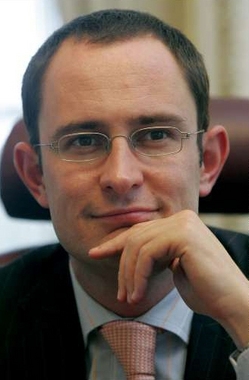
The World Economic Forum on Europe closed in Brussels (11 May). Over 400 leaders from business, government, academia and civil society from over 40 countries participated. The meeting, held from 10 to 11 May, was under the theme Renewed Leadership, New Vision.
The recent sovereign debt crisis and the unprecedented rescue package announced Monday 10 May exposed the fault lines in the Eurozone and "blew holes" in the complacent view that Europe is okay. The events of the past week forced policy-makers, politicians and citizens to a crossroads, where there is no choice but to face up to the tough challenges Europe needs to overcome to get back on a growth trajectory. Leaders from both "old" and new Europe agreed at the World Economic Forum on Europe’s closing plenary that the only way forward is reform, which will involve tough, unpopular choices for politicians and citizens.
The sheer scale of the immediate and longer-term challenges throws into question the Europe 2020 Strategy to guide the EU out of the worst economic crisis in decades, lays bare the weaknesses of the failed Lisbon Agenda and threatens to undermine the European social model. But the cataclysmic events of 2010 are also viewed as an opportunity.
"A decade of austerity will be necessary, but 2010 could become a new start for Europe," said Vincent Van Quickenborne (photo), Minister of Economy and Reform of Belgium. "Either we go to a future of being a footnote of the US … or [we] become a world player with more growth; 1% or 1.5% growth is not enough to pay for old Europe’s welfare system. We need brave, honest national politicians who are ready to say that to protect that welfare system, we should work longer and work harder. It is either reform or decline."
In the words of a European policy expert: "We cannot continue in the old rhetoric. It is totally inadequate to the challenges ahead. We need to redesign the European social model and the social market economy. To do this, we need the language of blood, sweat and tears."
Europe also needs science, technology and entrepreneurship to fuel innovation and green growth, which is at the heart of the Europe 2020 blueprint for competitiveness. "There are new competitors. We need something to export, like a new Airbus or a green car. We can get there. Europe also needs to flex its muscles. At Copenhagen [in the climate change negotiations], Europe was leading but didn’t have the leverage."
Despite the crisis that has rocked the Eurozone, Latvia still plans to adopt the currency by December 2015, if rules are enforced and Eurozone enlargement is not postponed. Valdis Dombrovskis, Prime Minister of Latvia, reminded participants that many countries in the Eurozone do not play by the rules whereby government deficits are not to exceed 3% of GDP. Fiscal control mechanisms and sanctions eliminated in 2003 need to be reintroduced and enforced.
Dombrovskis said the best way to protect the European social model is to focus the Europe 2020 Strategy on green growth and jobs. "Bottlenecks exist. We need to improve the business environment, overcome barriers, cut red tape, support SMEs and [push through] labour market reforms," he said. "These are all obstacles to EU’s growth potential. The best way to achieve social cohesion is through economic cohesion."
Dalia Grybauskaite, President of Lithuania, considered the macroeconomic picture. "Europe was shaking from global pressures, but we tried not to wake up. In Europe, there is an avoidance of seeing reality eye to eye. We cannot live alone in this globalized situation. [Member States] need to clearly agree on what kind of Europe we want, how deep an integration we want and in what other areas we want to agree. Otherwise, Europe will be a discussion club. If we can understand [our] problems, we can avoid them," she said.





